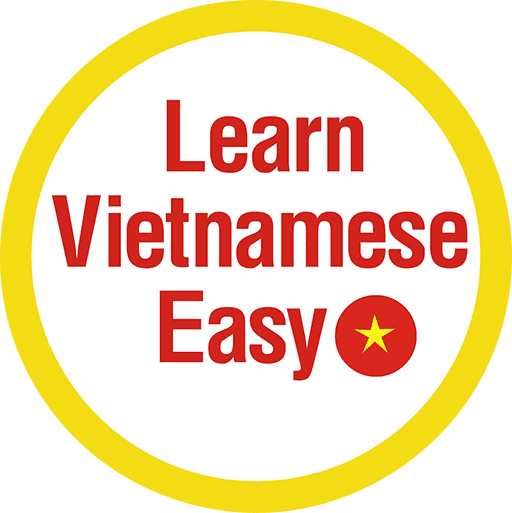CONTENTS
1.Chào + somebody
“Chào” means “hello or hi”. When saying hello, Vietnamese will add the pronouns of listeners. “Chào + somebody” it is a way to say goodbye as well.
Ví dụ (eg): chào anh, chào em, chào con…
![]() Note: To saying hello politely and respectfully to people that older than you, please to add your pronoun first.
Note: To saying hello politely and respectfully to people that older than you, please to add your pronoun first.
Ví dụ (eg): em chào anh, em chào chị, con chào cô, con chào chú,… (Literally “I – hello – you”)
![]() There are many personal pronouns used in example sentences. You can change them to suitable pronouns for you and for the listener.
There are many personal pronouns used in example sentences. You can change them to suitable pronouns for you and for the listener.
Let’s check it here 
2. Cám ơn/ Cảm ơn + somebody
“Cám ơn/ Cảm ơn” means “thank you”. Cám ơn is often used in Southern Vietnamese.
Ví dụ (eg):
A: Em cám ơn chị nha . (Thank you)
B: Không có gì em. (You’re welcome.)
—
A: Hôm nay cám ơn em nhiều nha. (Thank you so much for today.)
B: Không có gì anh. (You’re welcome.)
- nhiều: much, a lot, many
- Không có gì = không có chi: you’re welcome.
![]() Note: In spoken Vietnamese, remember to add the pronoun of the listener in the end of the question or sentence. That makes you friendlier, more polite and nicer. And maybe the locals will see you as a “real” Vietnamese, not foreigners.
Note: In spoken Vietnamese, remember to add the pronoun of the listener in the end of the question or sentence. That makes you friendlier, more polite and nicer. And maybe the locals will see you as a “real” Vietnamese, not foreigners.
3. Xin lỗi + somebody
Xin lỗi means “sorry, apologize, excuse me!”
Không sao = Không sao đâu: it’s okay, no problem, not a big deal, nevermind…
Whenever somebody apologises or says sorry to you, you can use this phrase to let them know you’re not upset.
Ví dụ (eg):
A: Con xin lỗi mẹ. Nói thiệt là con không cố ý. (I’m sorry mom. Honestly I am not on purpose.)
B: Không sao đâu con. (It’s ok/ No problem/ Nevermind/ Not a big deal…).
—
A: Xin lỗi, cho mình qua. (Excuse me, please let me pass)
B: ok bạn (Okay)
4. Đúng rồi.
It means “that’s right/ that’s correct”
Ví dụ (eg):
A: Công ty chị đang làm việc là công ty Hàn Quốc, phải không chị? (The company that you are working is Korean company, isn’t it?)
B: Đúng rồi em.
5. Em ơi
It means “hey you” but politely and naturally. You can say “the listener+ ơi” when you want to get their attention, especially ordering at the restaurant.
Ví dụ (eg):
A: Em ơi, cho anh 1 ly cà phê sữa. (Em ơi, A cup of coffee with milk please!)
B: Dạ anh. (Yes)
—
A: Cô ơi, đây là nhà của anh Minh phải không cô? (Cô ơi, this is Mr.Minh’s house, isn’t it?)
B: Đúng rồi con. (That’s right.)
![]() Click here to know How to order food and drink in Vietnamese naturally
Click here to know How to order food and drink in Vietnamese naturally
6. Hẹn gặp lại => Mai gặp (Mai gặp lại)
Hẹn gặp lại means “See you later”
Mai gặp means “See you tomorrow”.
- mai: tomorrow
- gặp: to meet, to see
- lại: again => verb + lại: do something again
When we know the time we will meet someone again, we can say simply “the time + gặp”
Ví dụ: (eg)
- Tuần sau gặp lại nha. (See on next week.)
- Tối gặp nha (See you tonight.)
- Thứ bảy gặp anh nha. (See you on Saturday.)
7. Ngủ ngon
It means “Good night”
- ngủ: to sleep
- ngon: good (for food, drink), tasty…
Ví dụ: (eg)
- Ngủ ngon nha con. (good night)
- Em ngủ ngon nha. (good night)
8. Thiệt hả?
It means “Really?, Seriously?”. Thiệt or thật means “real or true”.
Ví dụ (eg):
A: Biết gì chưa? Anh Matthew biết nói 5 thứ tiếng. (You know what? Mr. Mathew can speak 5 languages.)
B: Thiệt hả chị? (Really?)
A: Ừ em. Mà giỏi nhất là tiếng Việt. (Yes. But Vietnamese is the best.)
9. Trời ơi = Trời = trời đất ơi
It means “oh my God, oh God”, it’s same in English. When you want to express your surprise, joy, frustration, complaining, fear, anger…
- trời: sky, God
- “the listener + ơi”: this is the way to get their attention. Eg: em ơi, anh ơi, chị Thủy ơi…
Ví dụ (eg):
Trời ơi, hôm nay nhìn em dễ thương quá đi! (Oh god, you look so cute today.)
Trời, ở đây kẹt xe quá đi! (Oh God, the traffic jam here is so terrible.)
10. Nhà vệ sinh ở đâu?
It means “where is the bathroom?”
- nhà vệ sinh = toi-lét: WC, toilet, bathroom
- ở đâu: where?
You can simply replace the word “the bathroom” with something. Eg: quán cà phê Highlands ở đâu? (Where is the coffee shop Highlands?)
Ví dụ:
A: Cho em hỏi nhà vệ sinh ở đâu chị? (Can I ask where is the bathroom?)
B: Ở dưới tầng trệt em. (It’s on the ground floor.)



This article is an excellent resource for those learning Vietnamese, such as myself. It provides invaluable assistance.